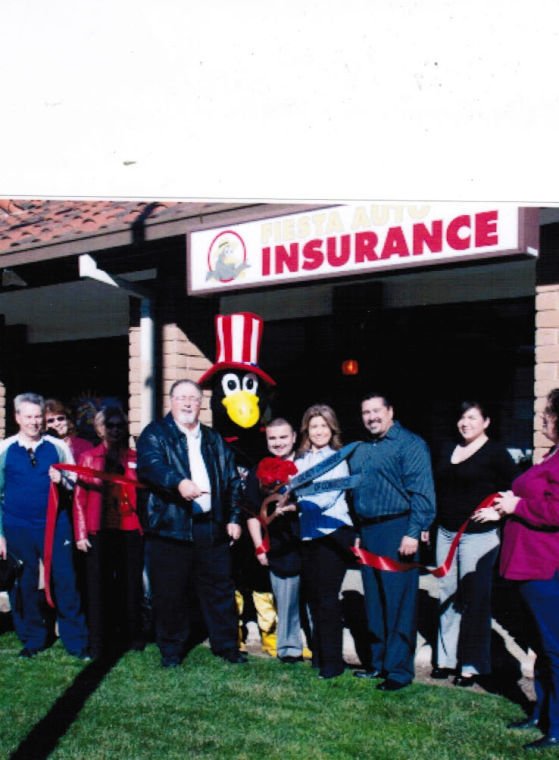
Gilroy City Council, despite hearing from nine concerned business owners and residents, strengthened an already existing ordinance to altogether ban a wide variety of signage, from prohibiting A-frame signs within city limits to excluding costumed sign-waving human advertisers from public property.
Small business owners from auto insurance and tax preparation to computer repair sectors asked the council to reconsider the ordinance. Many, including a representative from the Gilroy Chamber of Commerce, urged council members to proceed with caution before implementing a widespread ban.
“These signs can improve a business’s ability to survive and can improve the look of the downtown or areas where these signs exist,” Gilroy Chamber of Commerce Director Mark Turner said, adding the city should first increase enforcement of the sign ordinance already on the books before changing it altogether.
In a 6-1 vote, the council approved, on final reading, an ordinance that would also ban balloons, streamers, flags and handheld signs-including people who wave signs at passing traffic during its April 7 regular meeting. Open house signs posted by a licensed realtor and objects that move in the wind at new car dealerships would be exempted from the proposed restrictions, the ordinance reads.
After local business owners are notified of the changes in writing, warnings and fines-up to $500 for repeat offenders-will follow.
Fiesta Auto Insurance owner Barbara Rubio opened the company’s doors in Gilroy in July 2010 and has employed a man who wears a crow costume and serves as the mascot for the company, named “Max,” since its opening.
The mascot, who waves at passersby from the sidewalk near 751 First St., has proven the most successful form of advertising for Fiesta Auto Insurance, Rubio said.
“Honestly, about 70 to 80 percent of my business comes from that crow,” Rubio said. “It’s just something to help my small business grow. Now, I’m going to have to let my guy go who has been with us for four-and-a-half years. How do I do that?”
Liberty Tax Service, located at 1245 First St., employs someone who dresses up as “Lady Liberty” to promote the company. Like in the case of Fiesta Auto Insurance, Lady Liberty has been helpful in increasing foot traffic, according to the owner, Irene Peterson.
“We’ve tried other forms of marketing, and none have been that successful,” Peterson said. “We opened our office in 2010, and we could have gone to Morgan Hill, but we thought this was a business-friendly community. I never thought I’d be addressing city council over this form of marketing.”
Mayor Don Gage, who has championed the ordinance since it was introduced last month, countered that costumed advertisers are distracting and draw attention to an “ugly” and “unsightly” problem in the Garlic Capital.
“Signs detract from the City of Gilroy while we’re trying to attract businesses,” he said. “They’re trashy and we’re trying to upgrade the quality of the city.”
According to Gage, the sign ordinance is one step in a wider approach to improve downtown, along with holding downtown property owners with unreinforced masonry buildings responsible for repairing or retrofitting their structures up to state standards so they can survive high-magnitude earthquakes, according to Gage.
“The problem right now is that there are times you could roll a bowling ball down the center of town, and you wouldn’t hit anyone with it,” he said. “People aren’t going there, and they don’t want to go there. They feel unsafe because we’ve got (sic) closed buildings. As we start to improve the business community down there and fill up the buildings, you will have more foot traffic (at local businesses).”
The lone dissenting vote, Councilman Peter Arellano, said he still stands by his comments in March that the legislation is an example of government overstepping its boundaries.
Arellano argued that A-frame signs and sign waving advertisers provide a needed breath of life to Gilroy’s streets and highlight the city’s often hard-to-find small businesses.
“I think they look good; they’re colorful, and they’re bringing activity, life and color,” he said.
Gilroy resident Joseph Filice agreed and said he’s worried the public hadn’t had ample opportunity to comment on the legislation prior to the final vote.
“I don’t believe this ordinance has been sufficiently aired; it snuck up on me. I don’t like the fact there are exemptions,” Filice said. “We do not chase people away because we have banners or balloons. It makes us look alive.”
The Community Development Department’s Code Enforcement team, tasked with ensuring businesses and residents alike comply with various ordinances, will be mailing out information to local business within the next to months explaining what is prohibited and what is allowed.
“Should we find a business in violation after our outreach, we will issue them an administrative citation with 10 days to comply,” Code Enforcement Officer Scott Barron said.
If a business doesn’t comply, next will come a $100 penalty for the first violation. Repeat offenders may receive a $200 fine for the second violation and a $500 fine for all others within a year, he added.
Gilroy is planning on hiring two part-time, temporary code enforcement officers who will assist Barron in enforcing the updated sign ordinance over a six-month period and work 25 hours a week, according to Barbara Voss, assistant finance director for the City.
“The total cost for these positions for the six month period will fall within a range of $19,146 to $23,457 each depending upon experience,” Voss said in an email.
Georgine Scott-Codiga, a member of the Gilroy-Morgan Hill Patriots who addressed the elected body during the meeting, said she was disappointed that the testimony of local business owners and residents didn’t sway the council in the end.
“The people came out and they didn’t listen to them,” Scott-Codiga said in the hallway of council chambers after the meeting. “They just blew us off.”













